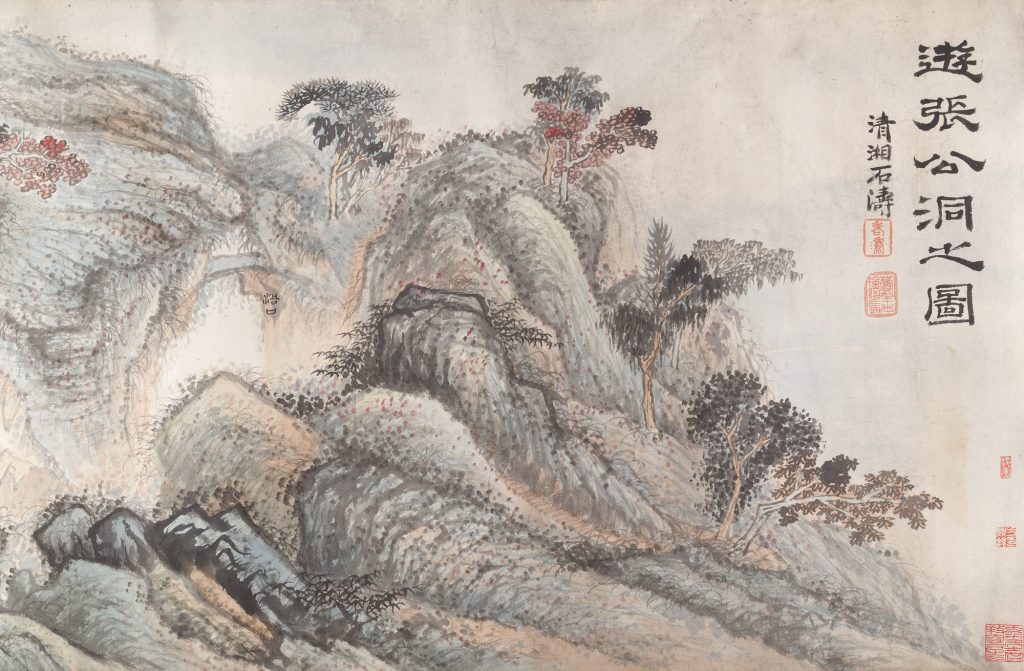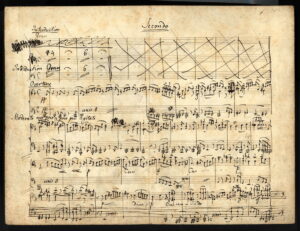With every bad situation there is a good side, but with every good situation there is a bad side.
Everyone has heard some variation of this cliché before, but where does this idea come from? It comes from an ancient Chinese philosophy that has influenced China since the sixth century BCE, namely, the belief system of Daoism.

The Chinese philosophy of Daoism is the “teaching of the way.” The Dao is the way in which things come together while constantly changing. This idea reflects an inherently Chinese belief that change is fundamental to life. The hexagrams are the correlative relationships that symbolize the patterns of change in Daoism. They are contradictory elements but are necessary for the flow of reality. This is where the concept of yin and yang comes from. Hexagrams are figures that are made up of six lines, with broken lines representing yin and the solid lines representing yang. Yin and yang is the principle of all things that exist, that all things are inseparable and contain contradictory opposites. Water/fire, earth/heaven, wind/thunder, hot/cold, are all examples of these inseparable opposites. One is not superior to the other, and an increase in one brings a decrease in the other. Harmony is achieved by complete balance between the two opposites.1

Daoism was a response to the disorder of the late Zhou Dynasty. Although it was a time of political distress, it led to people reflecting on roles of humans in society. Some wanted to reconstruct the political and social order of China, such as Confucianism, while others wanted to explore individual peace separate from society, such as Daoism.2
The Daodejing contains the most fundamental teachings of Daoism. The oldest texts from the Daodejing date back to the 4th Century B.C.E. It is where the concept of yin and yang comes from. It also teaches that humans should not tamper with the flow of reality, also known as wu-wei or “effortless action.” The Daodejing teaches that wu-wei should guide people’s lives. When something happens that may seem unfair, people should remember that the way of heaven or dao of tian never misses anything or leaves anything undone. In other words, everything happens for a reason and nothing happens incompletely.3

Laozi is credited with founding Daoism. He is veiled in mystery, since there is no solid record of Laozi ever existing. Some say he lived in sixth century B.C.E.; however, there is no record of a man named Laozi as the founder of Daoism. Laozi means “Old Master,” and he is believed to have written the Daodejing, but there is much debate about whether or not the Daodejing was written by one person or many. Regardless of all the speculation surrounding Laozi, he is still venerated as a philosopher by Confucians, and he was even worshiped as an imperial ancestor during the Tang Dynasty 618–907 C.E.4
Daoism influenced Chinese arts. Some of the oldest spiritual books received their influence from the pictures of Daoist temples. Daoist illustrations also influenced the desire to draw technical drawings, so it influenced a high level of botanical and mineralogical drawings. Calligraphy also has its influence from Daoism; Wang Xizhi is known as one of the greatest calligraphers of all time.5
Daoism focuses on ways of living that is separate from society. It teaches people to just let life happen, since there is a reason for everything that happens. Daoism influenced peoples’ thinking when it first emerged, and even now in modern society. Taiwan is where Daoism is still widely popular, and many temples have been restored to maintain the practice of the way.6
- Internet Encyclopedia of Philosophy, 2016, s.v. “Daoist Philosophy” by Ronnie Littlejohn ↵
- Jerry Bentley, Herbert Ziegler, and Heather Streets Salter, Traditions & Encounters: A Brief Global History, Volume 1, 3 edition (McGraw-Hill Higher Education, 2013), 1o2. ↵
- Internet Encyclopedia of Philosophy, 2016 s.v.”Daoist Philosophy” by Ronnie Littlejohn. ↵
- Encyclopedia Britannica, 2016 s.v. “Laozi, Chinese Daoist Philosopher ” by Roger T. Ames and Max Kaltenmark. ↵
- Encyclopedia Britannica, 2016, s.v. “Daoism – Influence” by Roger T. Ames, Anna K. Seidel, and Michel Strickmann. ↵
- Encyclopedia Britannica, 2016, s.v.”Daoism- Influence” by Ames, Seidel, and Strickmann ↵



32 comments
Kristina Tijerina
I’ve never heard of Daoism before, so I was really intrigued when I saw this article. I’ve heard the term “yin” and “yang” before, but I never really knew the actual meaning behind it. I now know that it’s a creation of balance and harmony. Through this article, I have learned that Daoism is mainly keeping the balance within your reality. Never think that one thing is better than the other, because you will become unbalanced. I also learned that Laozi was credited for founding Daoism, and that Daosim greatly influenced Chinese arts. Daosim really just implements living life as is, and letting things happen the way they do. It’s still very popular in Taiwan, which I think is really cool because it’s been around since the 4th century B.C.E.
Michael Lazcano
In one of my past religions we learned about different religions and ideologies and Daoism was one of them. I think that this philosophy is very applicable to the world today, and that we all participate in it but we just don’t think about it. The Chinese culture, and some other asian nations have made Daoism a way of life that they all follow, they do good and get good out of it, and that whatever comes their way is for a specific reason. Nothing is really left up to chance, and everything has a certain meaning behind it, it’s fascinating to think about it that way. The idea of Yin and Yang was also interesting to dive a little bit more about, this article was very concise but informative.
Christopher Hohman
Nice article. Daoism was such an important religion in Ancient China. It did not have any transcendent being or messiahs or anything common to Western Religions. But it never the less was quite important to the development of Ancient China. It focused on finding inner peace for oneself and was very different from Confucianism although the two were not mutually exclusive.
Miguel Rivera
Daoism was part of an important time in history labeled as the “Axial Age.” The teachings have influenced millions of people and is one that is very interesting. Notice how with every good there is a bad and vice versa, and it has helped people cope with themselves, outside forces, and “supernatural” events. Great article and I need to write a philosophical figure or religion article on my own.
Alexander Manibusan
I’ve seen Daoism spelled as Taoism, and it’s amusing to see that it has more than one spelling. It’s such a shame that there aren’t any written records of this Laozi character. It would be interesting to know exactly how he developed the hexagrams and what led him to create his philosophy. It would also shed light whether one person wrote it or if several people contributed to writing the Daodejing. Whoever this person was, or group of people, it’s impressive to see that their philosophical practice lives on.
Lilliana Canales
Daoism seems to be a nature of self based religion an doesn’t sound bad no and didn’t sound bad then. If I’m not mistaken, I believe that Confucianism was also prevalent during the same time that Daoism was so followers began following another religion. The image you provided of the temple of heaven is beautiful, this article was great and would be helpful for grade school students doing research on Daoism.
Donte Joseph
Learning about Daoism in high school was so much fun for me, so being able to read it again and see what I had learned again was very enlightening. Like in Daoism, I too believe that everything happens for a reason and that life ultimately comes with many obstacles that we must overcome. This article was well written and gives important and key facts about the religion that not everyone might have known before.
Esperanza Rojas
I love this part of Chinese history as soon as we learned about in class, I also felt that I totally misunderstood it when I first heard it when I was in high school. I thought Daoism was a strict religion where it followed a social structure that confined many women and valued the men, but learning more about it, I felt like a lot of my beliefs fall under this religion, not exactly, but somewhat, especially the belief of things happen for e a reason. This article is very well written and gives enough information to understand Daoism but leaves some details out for the reader to want to research on their own time.
Antoinette Johnson
Daoism is intriguing and unique. I can agree with their idea that everything happens for a reason. Life comes with many obstacles and presents. I find it interesting that there is no record for the person who founded or established Daoism. Yin and Yang are also representatives of the things that go on with life. For every good, there is a bad of equal quality and quantity. Life is full of mysteries and Daoism just replicates the ideals of the oppositions and life, and how they interrelate with each other.
Johnanthony Hernandez
Interesting article, I remember learning a little bit about Daoism in middle school, but it was more of just a quick overview. Your article taught me things that I didn’t know before, like who wrote down the ideology of Daoism. I also didn’t know that it had been used to restore balance to China in the chaos of the late Zhou Dynasty.